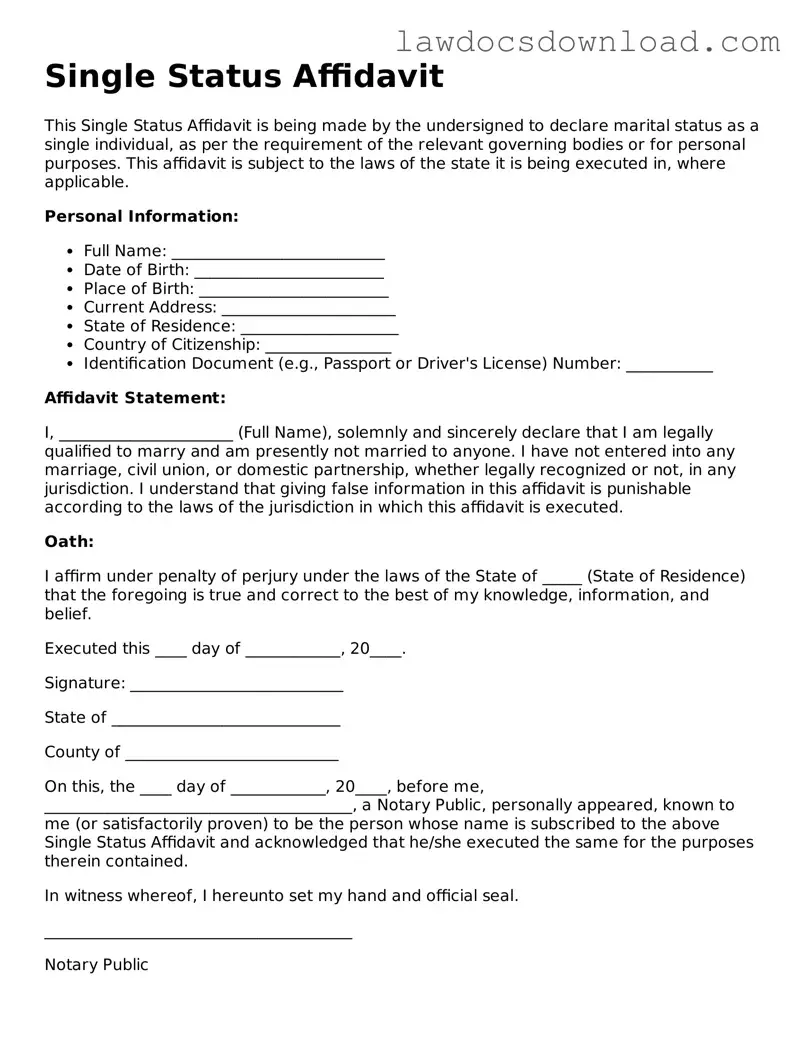Single Status Affidavit
This Single Status Affidavit is being made by the undersigned to declare marital status as a single individual, as per the requirement of the relevant governing bodies or for personal purposes. This affidavit is subject to the laws of the state it is being executed in, where applicable.
Personal Information:
- Full Name: ___________________________
- Date of Birth: ________________________
- Place of Birth: ________________________
- Current Address: ______________________
- State of Residence: ____________________
- Country of Citizenship: ________________
- Identification Document (e.g., Passport or Driver's License) Number: ___________
Affidavit Statement:
I, ______________________ (Full Name), solemnly and sincerely declare that I am legally qualified to marry and am presently not married to anyone. I have not entered into any marriage, civil union, or domestic partnership, whether legally recognized or not, in any jurisdiction. I understand that giving false information in this affidavit is punishable according to the laws of the jurisdiction in which this affidavit is executed.
Oath:
I affirm under penalty of perjury under the laws of the State of _____ (State of Residence) that the foregoing is true and correct to the best of my knowledge, information, and belief.
Executed this ____ day of ____________, 20____.
Signature: ___________________________
State of _____________________________
County of ___________________________
On this, the ____ day of ____________, 20____, before me, _______________________________________, a Notary Public, personally appeared, known to me (or satisfactorily proven) to be the person whose name is subscribed to the above Single Status Affidavit and acknowledged that he/she executed the same for the purposes therein contained.
In witness whereof, I hereunto set my hand and official seal.
_______________________________________
Notary Public
My Commission Expires: _____________
